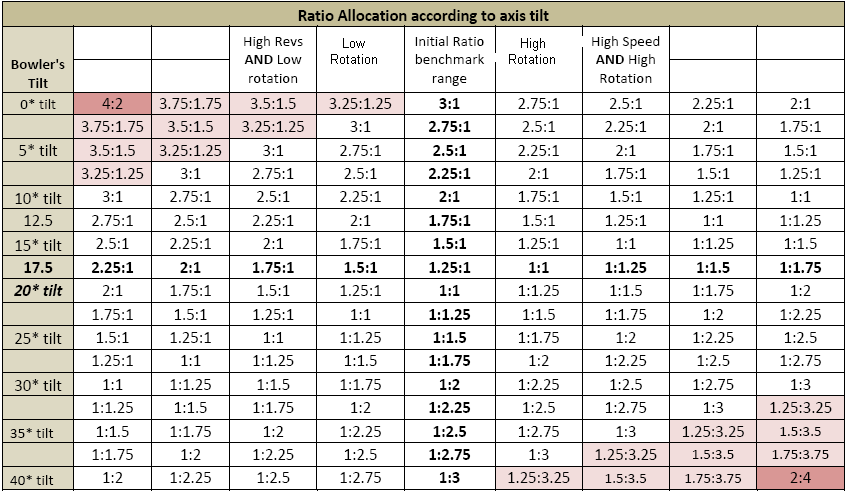Difference between revisions of "Dual Angle Ratio Guide"
Elgavachon (talk | contribs) |
Elgavachon (talk | contribs) |
||
| Line 68: | Line 68: | ||
Higher '''rev dominance''' and/or extreme '''low rotation'''= i'''ncrease ratios'''.<br /> ''(adjust to boxs further left on the chart)'' | Higher '''rev dominance''' and/or extreme '''low rotation'''= i'''ncrease ratios'''.<br /> ''(adjust to boxs further left on the chart)'' | ||
| + | |||
<u>example # 1</u> | <u>example # 1</u> | ||
20* tilt with very speed dominant and/or high rotation, the initial ratio would have been 1:1. The '''new adjusted benchmark ratio''' will be 1:1.5 with a new ratio range 1:1 to 1:2 (range is an example only). <br /> | 20* tilt with very speed dominant and/or high rotation, the initial ratio would have been 1:1. The '''new adjusted benchmark ratio''' will be 1:1.5 with a new ratio range 1:1 to 1:2 (range is an example only). <br /> | ||
Revision as of 04:26, 15 August 2010
Contents
'joint effort from Elgavachon/Athery'
ratio discussion
Mo once told us "Determine the ratio of the angles to determine the shape of the ball motion. Axis rotation and axis tilt affect this decision a lot."
Mo more recently said " Once you decide on the ratio, the rest is math". Here is a chart Athery has done to help with finding the ratio and a range of ratios to do that math.
to obtain approximations of ratios (based off various of Mo's recommendations)
After you have calculated the total sums and before you can calculate the benchmark or sweet sums, it is necessary to find the benchmark ratio.
This is necessary To accurately calculate the drilling angle and the val angle individually.
. The middle column (Initial Ratio benchmark range) gives some examples of of approximate ratios sometimes used by Mo for speed/revs matched + normal rotation.
CHART IS BY ATHERY
speed or rev dominance and/or extreme high or low rotation
- In case of a conflict between speed or revs and rotation, go with ratios which correspond to the rotation.
Higher speed dominance and/or extreme high rotation=decrease ratios.
(adjust to boxs further right on the chart)
Higher rev dominance and/or extreme low rotation= increase ratios.
(adjust to boxs further left on the chart)
example # 1
20* tilt with very speed dominant and/or high rotation, the initial ratio would have been 1:1. The new adjusted benchmark ratio will be 1:1.5 with a new ratio range 1:1 to 1:2 (range is an example only).
example # 2
20* tilt with very rev dominant and/or low rotation, the initial ratio would have been 1:1. The new adjusted benchmark ratio will be 1.5:1 with a new ratio range of 2:1 to 1:1(range is an example only).
You could go wider to include more layout options for a wider range of conditions, higher or lower depending on amount of dominance.
Mo very seldom gives an extremely large ratio range. It is more common with very low or very high tilt. A +or- of around .5 above or below benchmark ratio seems close to average
Further Notes
These ratios need to be calculated according to amount of speed dominance or rev dominance and/or excessive high rotation or excessive low rotation. you need this adjusted ratio range to utilize in conjunction with your total sums to accurately calculate your sweet sums. Your adjusted ratio range would be used with the +or- total sums to calculate long pattern and short pattern layouts. Mo frequently uses the lower ratio range for control drillings for easy conditions or wet/dry. He frequently uses the higher ratio range for more challenging conditions. The amount you increase or decrease ratios would depend on each individual bowlers specs.
These are our ideas of how we to get a start at finding ratios.
DON'T DRILL ANY BALLS UNTIL YOU HAVE BEEN APPROVED BY THE MODERATORS
